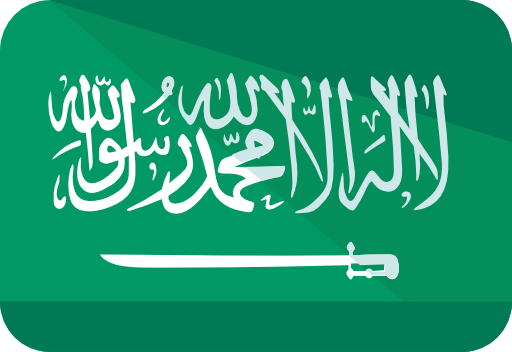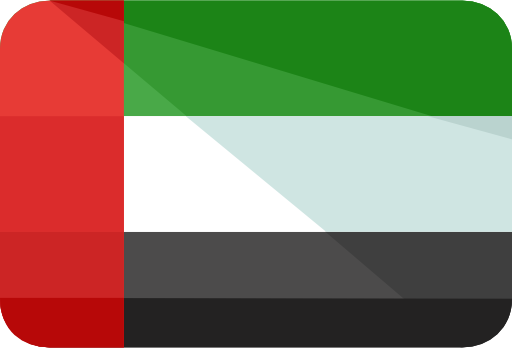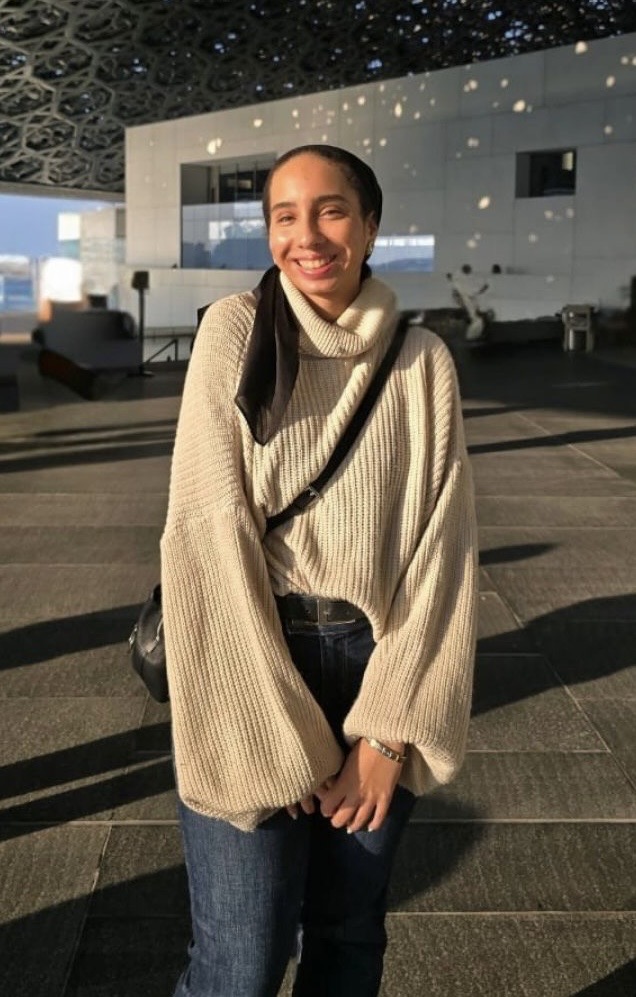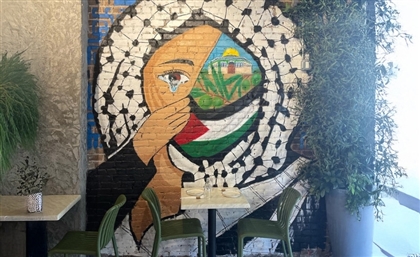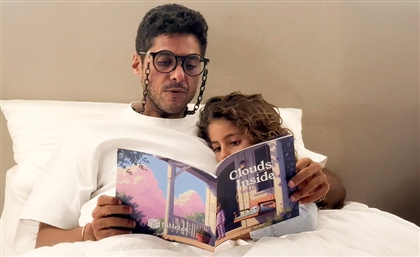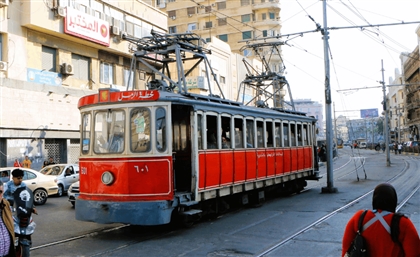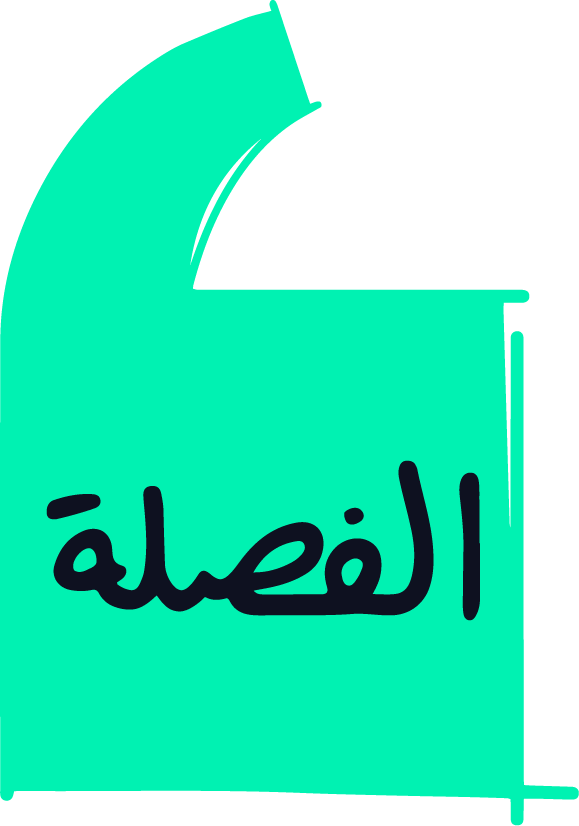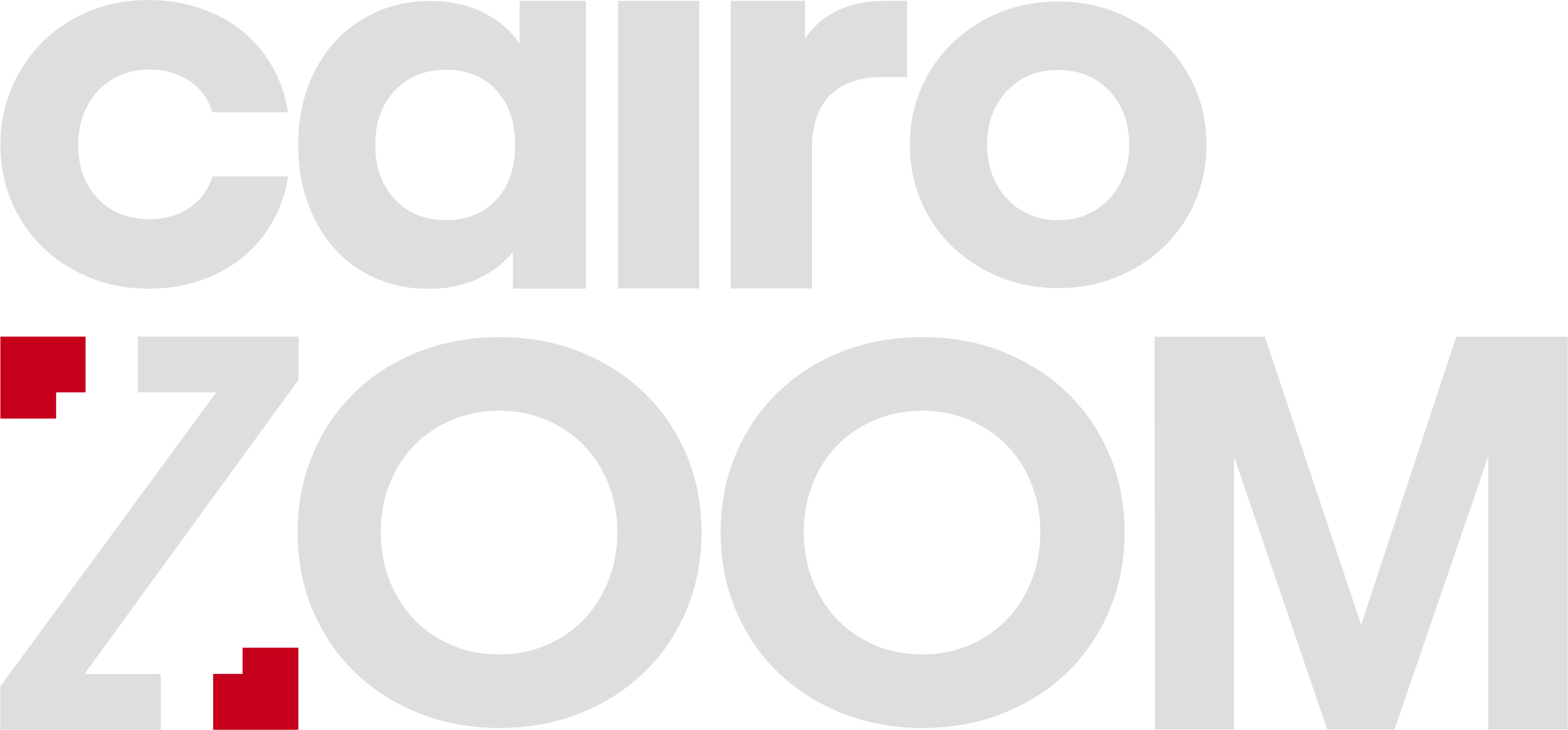Areen Hassan Uses Textiles as a Language of Palestinian Identity
Areen Hassan’s "Weaving the Land" Back transforms Palestinian textile motifs into structures of memory and identity.
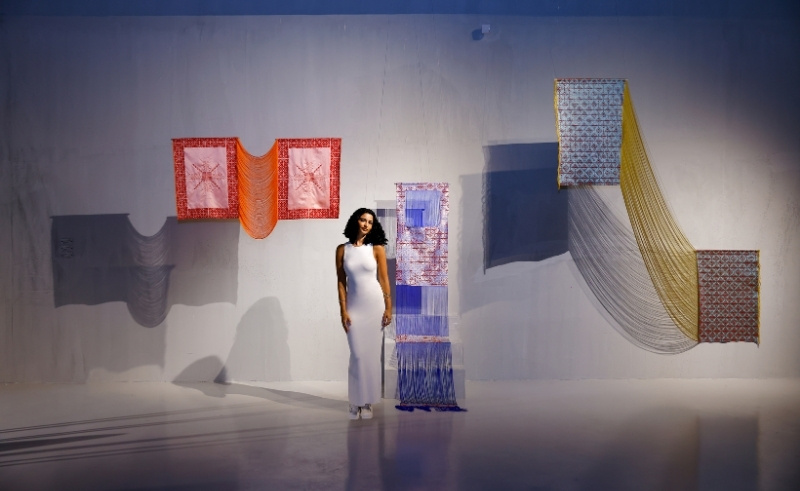
Originally Published on Oct 03, 2025
Palestinian textile artist Areen Hassan draws on heritage as the thread that binds her art and identity. Her series, 'Weaving the Land Back', comprises three large-scale works that reframe traditional Palestinian motifs through a contemporary lens. By combining cross-stitch embroidery with silkscreen printing, and by allowing threads to unravel, Hassan builds textiles that are simultaneously structured and broken down. This dialogue between construction and deconstruction anchors the series. Embroidery is treated as a structural framework, tracing survival, displacement and identity.-3ebb2ec1-88c4-47f3-88b7-808153ee6095.jpg) “My Palestinian heritage is the thread that binds my art and identity," Hassan tells SceneHome. "Palestinian embroidery is more than echoes woven in every stitch, it is a legacy passed down through generations—from grandmother to mother to daughter. It is a living vessel of memory, resilience, and identity, pulsing through every thread and colour, carrying our ongoing stories.”
The three works unfold sequentially, each extending the story of migration and endurance.
“My Palestinian heritage is the thread that binds my art and identity," Hassan tells SceneHome. "Palestinian embroidery is more than echoes woven in every stitch, it is a legacy passed down through generations—from grandmother to mother to daughter. It is a living vessel of memory, resilience, and identity, pulsing through every thread and colour, carrying our ongoing stories.”
The three works unfold sequentially, each extending the story of migration and endurance.-467b9e20-27d5-4ea7-9ee8-959679c38234.jpg) 'Motif of Memory' places the Berry Tree motif inside a repeated Tile Branch frame, forming a rigid spatial grid. At its centre, threads unravel, evoking rupture and persistence. The repetition recalls imposed borders, and the exposed gaps chart survival within constraint. The Berry Tree, long a symbol of deep-rooted durability and continuity in Palestinian embroidery, appears fragile yet enduring, its form interrupted yet never erased.
'Motif of Memory' places the Berry Tree motif inside a repeated Tile Branch frame, forming a rigid spatial grid. At its centre, threads unravel, evoking rupture and persistence. The repetition recalls imposed borders, and the exposed gaps chart survival within constraint. The Berry Tree, long a symbol of deep-rooted durability and continuity in Palestinian embroidery, appears fragile yet enduring, its form interrupted yet never erased.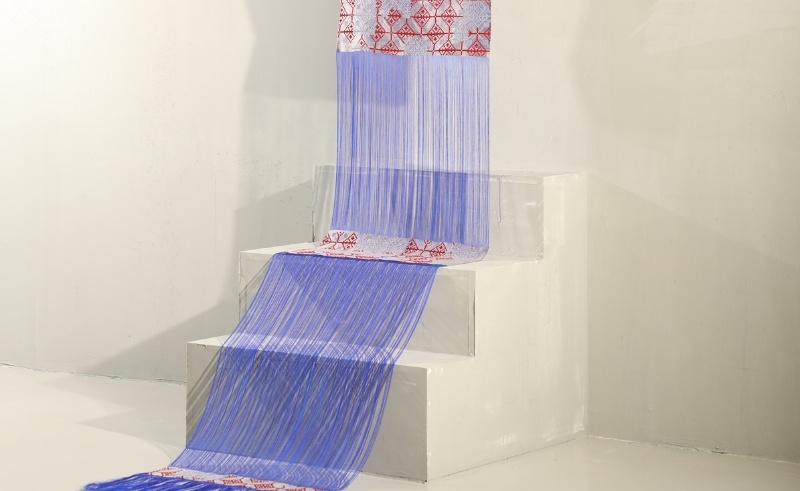 In 'Rooted Across', the Tile Branch extends across the fabric like a barrier wall. Longer interruptions in the weave suggest distance and displacement, yet the line continues, maintaining connection across separation. The stark horizontal band evokes division, while the threads that pierce or drift away from it trace the persistence of ties across fragmented geographies. The work captures the paradox of being uprooted and connected, absent and present.
In 'Rooted Across', the Tile Branch extends across the fabric like a barrier wall. Longer interruptions in the weave suggest distance and displacement, yet the line continues, maintaining connection across separation. The stark horizontal band evokes division, while the threads that pierce or drift away from it trace the persistence of ties across fragmented geographies. The work captures the paradox of being uprooted and connected, absent and present.-28b7fd55-d29d-4f50-9335-5632abe2932a.jpg) The 'Long Weave' begins with loose threads that flow into repeating printed frames. This movement charts a passage from fragmentation to continuity, mapping a journey of migration, endurance and reclamation. The gradual accumulation of pattern across the textile mirrors the act of rebuilding identity after dispersal, one stitch at a time. The loosened strands evoke precarity, and the extended weave speaks to renewal and continuity.
The 'Long Weave' begins with loose threads that flow into repeating printed frames. This movement charts a passage from fragmentation to continuity, mapping a journey of migration, endurance and reclamation. The gradual accumulation of pattern across the textile mirrors the act of rebuilding identity after dispersal, one stitch at a time. The loosened strands evoke precarity, and the extended weave speaks to renewal and continuity.-2fc1a22e-05cd-45a4-83c6-5105c483a400.jpg) “The embroidery layers woven into this series were created by Palestinian refugee women living in South Lebanon, members of the Inaash Association,” Hassan tells SceneHome. “Their hands carry the profound legacy of displacement and resilience, infusing the work with an authentic and living connection to the narrative.”
“The embroidery layers woven into this series were created by Palestinian refugee women living in South Lebanon, members of the Inaash Association,” Hassan tells SceneHome. “Their hands carry the profound legacy of displacement and resilience, infusing the work with an authentic and living connection to the narrative.”-9162c1bb-50f1-4991-8803-a1c4b97f9018.jpg) Hassan frames her practice as one of experimentation and identity-building. “Textile is a powerful tool. Through it we can create a statement,” she explains. “Artists should experiment as much as they can before choosing their path. The story a textile artist creates should always reflect their identity and their experience, and experimentation is essential to finding that story.”
Hassan frames her practice as one of experimentation and identity-building. “Textile is a powerful tool. Through it we can create a statement,” she explains. “Artists should experiment as much as they can before choosing their path. The story a textile artist creates should always reflect their identity and their experience, and experimentation is essential to finding that story.”
- Previous Article Cinematic Season Style Guide with GFF's Salma Malhas & Hayat Aljowaily
- Next Article With Hoda Abrahim You Will Find Love, Inshallah
Trending This Week
-
Nov 17, 2025


